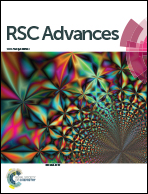Photoluminescence and wettability control of NiFe/ZnO heterostructure bilayer films
Abstract
The controllable photoluminescence and wettability of NiFe/ZnO heterostructure bilayer films have been demonstrated by applying an ultrathin NiFe capping layer onto ZnO films by radio-frequency magnetron sputtering at room temperature without introducing any oxygen gas during the deposition process. High quality crystalline ZnO(002) textured films were fabricated at first and displayed a remarkable near-band-edge emission peak located at around 370 nm with a bandgap of 3.35 eV confirmed by room temperature photoluminescence spectra. Once the ZnO films were capped with a single NiFe layer, ranging from 5 to 20 nm in thickness, the intensity of their near-band-edge emission peak decreased and the emission band shifted to 414 nm. On the other hand, the contact angle of the uncapped ZnO film increased from 88° to 101° with the addition of a 10 nm thick NiFe capping layer. This means that the ultrathin NiFe layer acted as a surfactant layer. The surface wettability could be switched from hydrophilic to hydrophobic due to the varied surface free energy caused by the controllable grain morphology of the NiFe/ZnO heterostructures. This work demonstrates that a direct NiFe capping layer can effectively control the optical, surface and magnetic characteristics in NiFe/ZnO heterostructures depending on the bimetallic NiFe thickness and provide valuable multifunctional behaviors for potential novel magnetoelectric applications.


 Please wait while we load your content...
Please wait while we load your content...